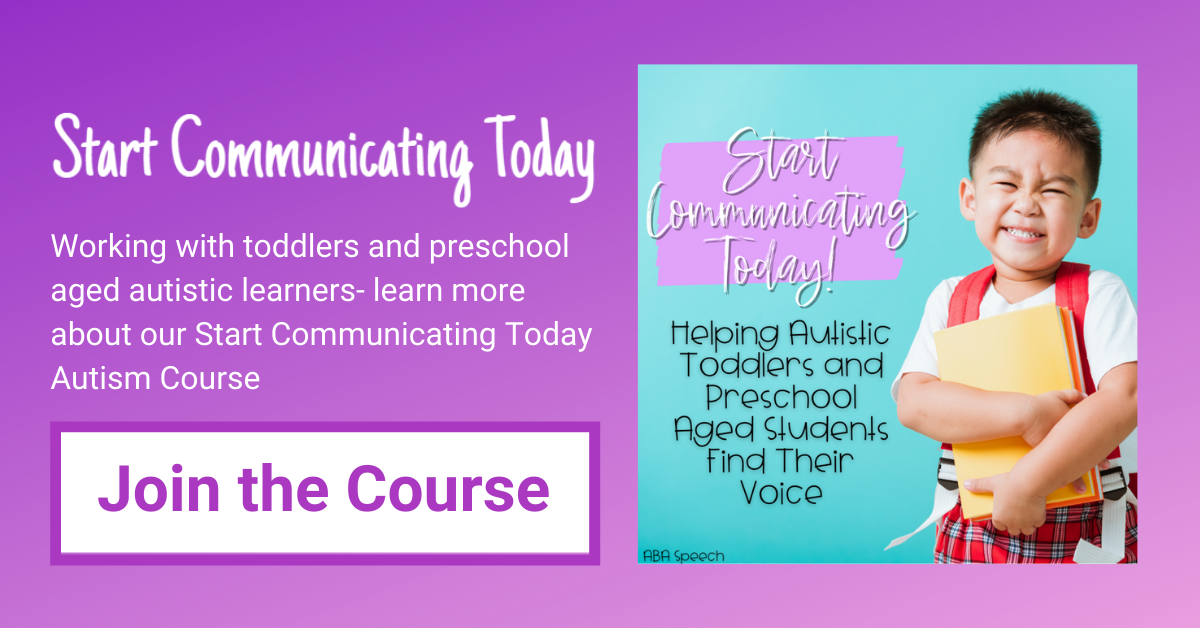“Well, I guess you better figure it out”....
Episode #108: The Power of No with Lisa Wallace
No. No, thank you. I don’t want to. I don’t like this. These are important statements that communicate that you do not want something to happen. In this episode, Lisa Wallace an SLP who has worked with young children with autism and their families for over 25 years talks about this important yet overlooked skill of communicating “no.”
No may look like a variety of things depending on the activity and the child’s communication level. Clear signals might be verbally saying no, giving back or throwing an item, running away, crying, and in some cases severe problem behaviors. Other more subtle symptoms might be withdrawal, closing of eyes, turning away, and disengagement.
Effective communication of “no” should be a goal for every child, regardless of how they are currently communicating it. To assess where to start, Lisa recommends using observational informal assessment, taking notes, and talking to the caretaker. What triggers a “no” response? What does “no” mean to them? What does “no” look like to them?
Lisa talks about working towards this goal in a mildly challenging way because there often are no provided opportunities to communicate “no”. Especially, if you have a child who is happily engaged in every activity. Or alternatively, you have a child who, provoking a “no” activity might cause triggering, dangerous behavior.
Tips for “Practicing Protesting”
- Set up in a Mildly Challenging Situation (Avoid high stakes situations)
- Set antecedents, what are going to be the causes of the “no”?
- Provide visuals, AAC, or other familiar communication tools.
- Ready to model. Show the learner what communicating “no” looks like.
- Use the correct reinforcement: Removal of antecedent.
You want the child to know and understand that when they communicate “no” or “I don’t want to” or “Not like this”, their communication is going to be validated. Do not continue doing the “no” activity in any capacity.
This is such a great topic, and one I don’t think we discuss nearly enough. Saying “no” is an important piece of communication in helping our learners find their voice.
#autism #speechtherapy
Today’s Guest:
Lisa Wallace is a speech-language pathologist who has worked with young children diagnosed with autism and their families for over 25 years. She has worked at the Bill Wilkerson Center at Vanderbilt, in several school systems in Tennessee, and in private practice. Currently, she is the director of the Tadpole clinic within the Treatment and Research Institute for Autism Spectrum Disorders (TRIAD) at Vanderbilt University Medical Center. In this role, she oversees ABA intervention for very young children with autism focused on social communication, engagement, and self -determination as well as robust coaching for caregivers in these areas.
What’s Inside:
- Why is communicating “no” so important?
- Creating goals based on communicating “no”.
- How to practice protesting in a supportive, non-triggering manner.
- What does “no” mean to each child?
- Observing clear or subtle “no” signals.
- Why saying “no” effectively should be a goal for every child.
Mentioned In This Episode
—ABA Speech: Learn About Current ASHA and ACE CEUs
Rate, Review & Subscribe
If you found this podcast helpful, please consider rating and reviewing my show! This helps me to support more people — just like you!
If you have not done so already, subscribe to the podcast. This ensures that you do not miss an episode!
Listen on
Apple Podcasts
Listen on
Stitcher
Subscribe
via Email
You Might Also Like…
Episode #185: Replay: The Power of Joint Attention
Enjoy this replay from episode 62. Joint attention is...
Episode #184: 5 Tips For Dealing With Contentious IEP Meetings
Conflict is part of what we do...

